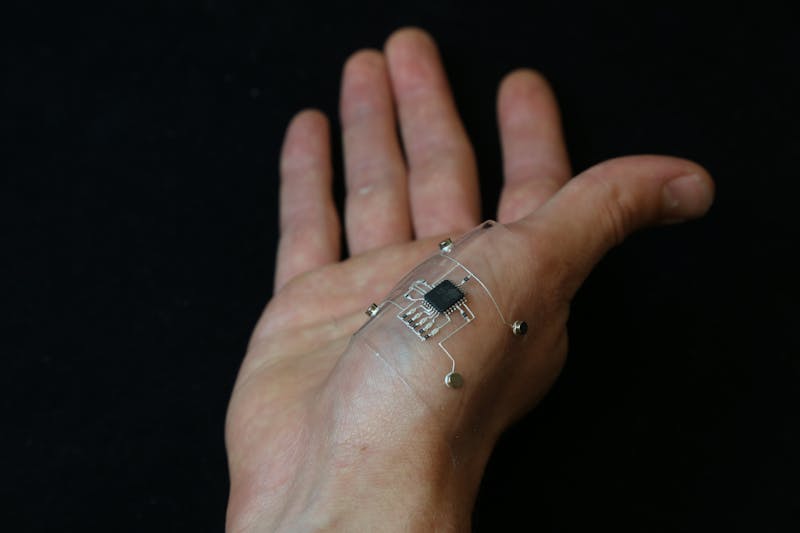To fit more reliably and comfortably when worn, wearable electronics must be flexible while retaining their ability to collect and communicate data. Conventional sensors and other electronic components, even when made very small, don’t often offer these attributes, which can limit their use as medical devices. A new additive manufacturing method from researchers at Harvard University’s Wyss Institute for Biologically Inspired Engineering makes it possible to create useful monitoring electronics that fit more comfortable and move naturally when worn directly on the skin.  Image Source: Wyss Institute Hybrid 3D Printing Through a process that the researchers refer to as hybrid 3D printing, electronically conductive inks can be incorporated into wearable devices that are not only soft and flexible, and therefore comfortable to wear, but can also be stretched and still perform reliably. The conductive ink is made from thermoplastic polyurethane (TPU) and contains electrodes, which can be layered with a soft, flexible substrate through an additive manufacturing process. As the ink solidifies, the result is a conductive, highly flexible, and fully functional circuit that can be used for a range of medical needs.
Image Source: Wyss Institute Hybrid 3D Printing Through a process that the researchers refer to as hybrid 3D printing, electronically conductive inks can be incorporated into wearable devices that are not only soft and flexible, and therefore comfortable to wear, but can also be stretched and still perform reliably. The conductive ink is made from thermoplastic polyurethane (TPU) and contains electrodes, which can be layered with a soft, flexible substrate through an additive manufacturing process. As the ink solidifies, the result is a conductive, highly flexible, and fully functional circuit that can be used for a range of medical needs.  Image Source: Wyss Institute Custom Fit For The Patient And Diagnosis Since these soft sensors can be printed to just about any shape, and with the position of the conductive features determined during the manufacturing process, it’s possible to create medical sensory devices that fit the patient as well as the specific data to be collected. Researchers are able to collect information from a wearer’s movement or from the application of pressure and easily read the resulting data in a number of ways. The hybrid 3d printing process has been noted as significant for the flexible and versatile devices it yields, as well as its relative low cost. While the resulting products are currently in the prototype stage, researchers have called this a first step in creating robust and affordable wearable electronics that are also comfortable and customized. [embedyt] https://www.youtube.com/watch?v=JXDshv7USRc[/embedyt] Have thoughts to share on this development? Let us know in the comments. Article Sources http://www.medicaldesignandoutsourcing.com https://wyss.harvard.edu
Image Source: Wyss Institute Custom Fit For The Patient And Diagnosis Since these soft sensors can be printed to just about any shape, and with the position of the conductive features determined during the manufacturing process, it’s possible to create medical sensory devices that fit the patient as well as the specific data to be collected. Researchers are able to collect information from a wearer’s movement or from the application of pressure and easily read the resulting data in a number of ways. The hybrid 3d printing process has been noted as significant for the flexible and versatile devices it yields, as well as its relative low cost. While the resulting products are currently in the prototype stage, researchers have called this a first step in creating robust and affordable wearable electronics that are also comfortable and customized. [embedyt] https://www.youtube.com/watch?v=JXDshv7USRc[/embedyt] Have thoughts to share on this development? Let us know in the comments. Article Sources http://www.medicaldesignandoutsourcing.com https://wyss.harvard.edu
The following article More Flexible Electronic Manufacturing Means Better Medical Monitoring is available on www.MAGODA.com
No comments:
Post a Comment